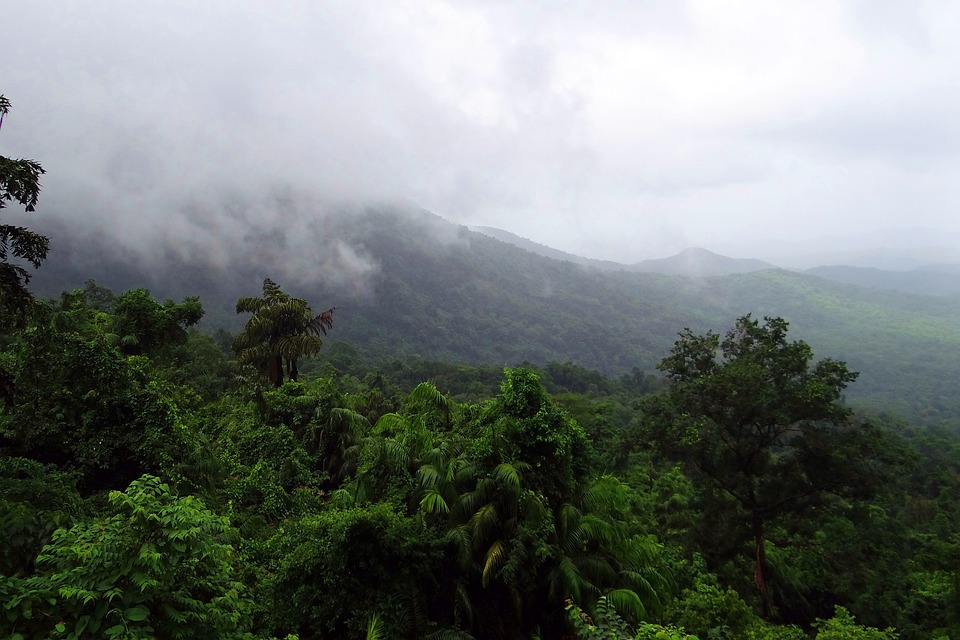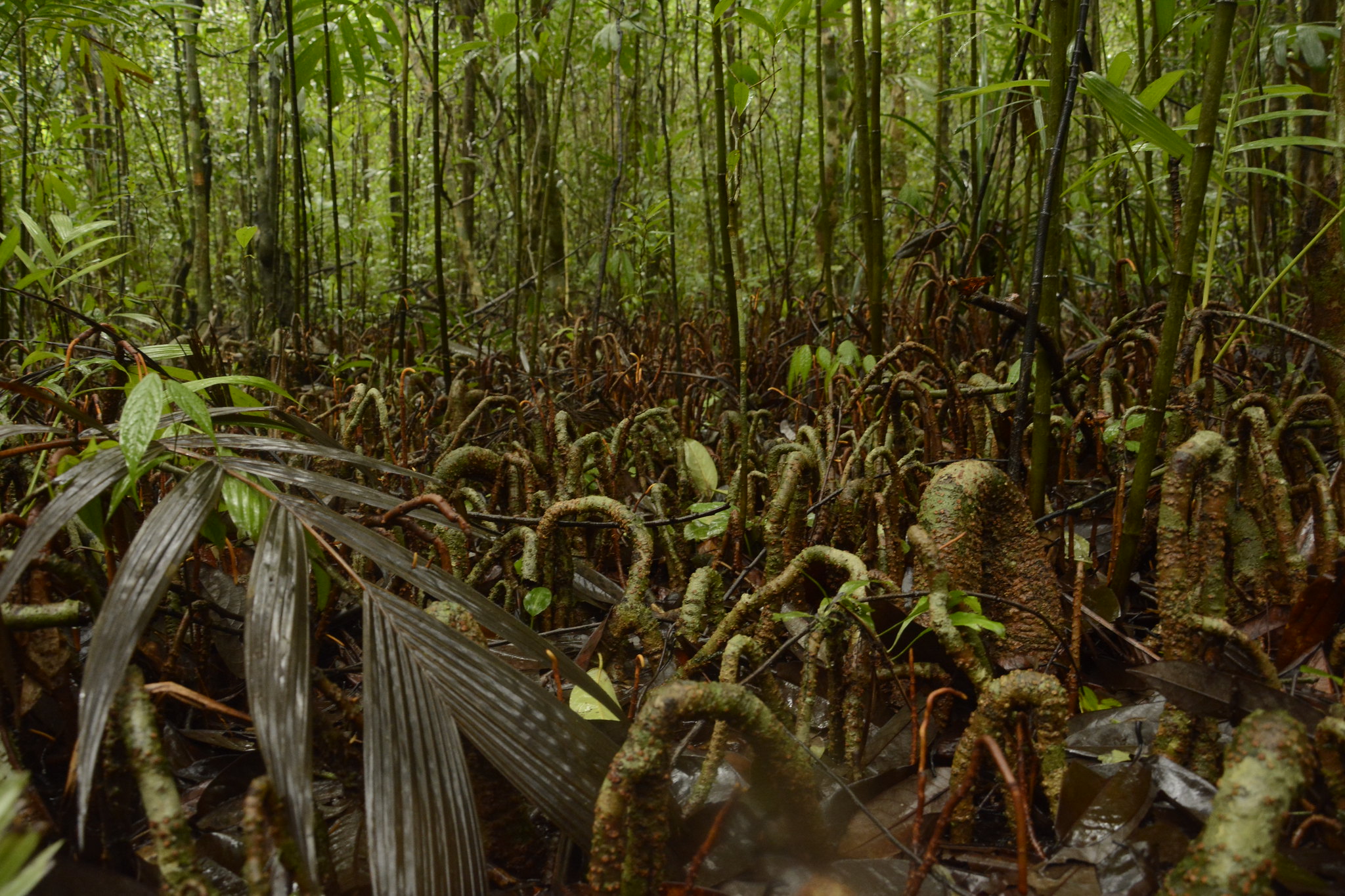- The Western Ghats of India are rich in biodiversity and species endemism owing to their unique terrain and habitats.
- Several habitat and climatic factors influence evolutionary processes and play an important role in shaping this diversity.
- Biodiversity enriches ecosystem services providing reasons to develop better policy and management strategies for habitat preservation.
The Western Ghats of India are broadly divided into three subdivisions — the northern, central and southern — separated by the Goa gap and the Palghat gap respectively. Due to their climatic stability and terrain ruggedness, they are a museum and cradle of species diversity. Over the years, a series of studies on a range of habitats in the Western Ghats have shown how drought, rainfall and elevation, influence evolutionary processes and play an important role in shaping this rich diversity.
Habitat preservation and restoration is vital to conserve and enhance biodiversity, which in turn can boost the various ecosystem services they provide.
The habitat-diversification connection
In one of the first studies on rock dwelling fauna, published in January 2023, a group of scientists found that even species that can adjust to extremely variable climates on lateritic plateau habitats are vulnerable to changes to land-use pattern, such as agroforestry and paddy cultivation.
Habitats classified as wastelands are vulnerable to land-use change which reduces the area of suitable habitat for the amphibian and reptile species found here, negatively impacting their diversity and abundance. While most studies focus on land-use change impacts on forested habitats, the understanding of how it affects biodiversity in unique lateritic plateaus has remained limited.
In the study, which is currently a preprint that needs to be certified by peer review, researchers from the Nature Conservation Foundation, Bombay Environmental Action Group, and Reliance Foundation compared the prevalence of two endemic herpetofauna in the northern Western Ghats — Seshachari’s caecilian (Gegeneophis seshachari) and white-striped viper gecko (Hemidactylus albofasciatus) — with a commonly found snake, the saw-scaled viper (Echis carinatus), as well as the composition of other rock-dwelling animals across undisturbed plateau sites, agroforestry plantation sites and abandoned paddies on plateaus. They found that the responses of species to land-use change were context specific.

The conversion of lateritic plateaus to agroforestry plantations and paddy negatively impacted the threatened and endemic reptile H. albofasciatus and the generalist snake E. carinatus. But interestingly, G. seshachari, an endemic amphibian that occurs in forests and plateaus, was more prevalent in the abandoned paddy than in less-disturbed plateaus and orchards in the Western Ghats.
In another study from 2022, of Myristica swamps in the Western Ghats, scientists from the Ashoka Trust for Research in Ecology and the Environment (ATREE) found that seasonal flooding also influences species diversity – particularly that of the nutmeg species famously known in the region. The study found that seasonal flooding in the Western Ghats diversified the ecologically important Myristicaceae family of which Myristica fragrans, commonly known as jaiphal (nutmeg), is also economically important as a source of local livelihood.
Insect species also abound in plenty in the Western Ghats (WG). A separate 2021 study of 19 species of scolopendrid centipedes shows that as the latitude increases, the diversity of the insects decreases. The southern WG had the highest diversity and endemism. On the other hand, the northern WG, despite having low diversity, had high values of endemism represented by distinct lineages adapted to life in lateritic plateaus, which is characterised by poor soil conditions and high seasonality.
Factors driving high diversity
Another recent study from December 2022 has found that the diversity gradient in the Western Ghats is likely driven by high geo-climatic stability in the southern region and the tendency of species to retain their ancestral traits for moist and seasonal sites. Besides, the higher topographic heterogeneity in the lower latitudes, allow for both persistence and higher diversification rates. Across all evolutionary depths, while some lineages do manage to occur in the more seasonal and drier northern WG, it is the south in which higher diversity persists. This has been attributed to low seasonality and higher water availability, notes the paper which is currently a pre-print and not yet certified by peer review.
While climatic variables in terms of drought seasonality, rainfall and elevation shape the evolutionary diversity, there are also several habitat related factors that drive this diversity.
Another study (currently under review in the journal Limnology and Oceanography) examined temporary rock-pools on the lateritic plateaus in the northern Western Ghats. These habitats are often overlooked, but are known to support diverse, often endemic species, many of which are new to science. The authors followed the trajectory of arthropod communities in these pools throughout their filling and drying cycles. Mihir Kulkarni, scientist at Centre for Cellular and Molecular Biology and the lead author in this study, says rich biodiversity in these habitats can be best preserved and maintained by protection of the entire landscape which harbours multiple pools differing in their environmental conditions rather than individual pools.

“Temporary pools are extremely vulnerable to climate change (changing rainfall patterns directly affect the hydro-period) and human-mediated habitat destruction, both of which endanger diverse, endemic communities. The protection measures need careful consideration, taking into account the dependence of local stakeholders on these landscapes,” Kulkarni said.
Another study on Myristica swamps found that one of the reasons behind the diversification of the species in this biodiversity hotspot are the seasonal floods which was an important driver of ecological diversification in the place. The multi-institutional study published in February 2022, traced five nutmeg families, indigenous to the forests of Western Ghats in India, dominating different types of landscapes ranging from low-lying seasonally flooded to higher ground and non-flooded habitats.
The study conducted by the University of Agricultural Sciences, Ashoka Trust for Research in Ecology and the Environment (ATREE), Nature Conservancy Centre in collaboration with Concordia University and Quebec Centre for Biodiversity Science found that seasonal flooding brought in unique morphological and physiological adaptations, like aerial roots in the species occurring across two main habitat types mainly seasonally flooded habitats such as riparian and swamps, and non-flooded habitats such as upland evergreen and semi-evergreen forest.
The scientists traced that while the ancestral species did not have aerial roots, later members developed flood tolerance traits like knee roots and stilt roots. Flooding gradient in the habitat might have played a key role in the diversification. While those inhabiting the swampy areas developed aerial roots, those in the highlands stand out with the lack of it. They also showed contrasting patterns of distribution across their geographic range.
A plethora of ecosystem services
The huge diversity that the Western Ghats nurtures provides several ecosystem services, making them ecologically as well as economically important. For instance, the Myristica swamps in the Western Ghats regulate local hydrology, their fruits are used as spices and help local communities earn alternative revenue, and their seeds are eaten by birds such as the hornbills, wild boars and other mammals in the tropical forests. Some species are also known to have medicinal properties.
On the other hand, reptiles, snakes and centipedes provide for nutrient cycling, biological control, seed dispersal, sources of protein, raw materials and medicinal resources. They are also used in local communities’ rituals and are a key component in the cultural fabric of the region.
Rising threats and conservation measures
Many species in the Western Ghats are under pressure due to rapid change of habitat patterns. The loss of diversity and its effect on ecosystem services highlight the importance of conservation in the region.
For example, a study by ATREE, published in the journal Plant Diversity, shows that rattans, or canes are one of the most important non-timber forest products supporting the livelihood of many forest-dwelling communities in south and northeast India. But due to increased demand for rattan products, rattans have been extracted indiscriminately.
Loss of habitat and poor regeneration have resulted in dwindling rattan populations, necessitating an urgent attempt to conserve existing rattan resources. The study identified at least two to three sites of extremely high species richness outside the existing protected area network that should be prioritised for in situ conservation.
Similarly, the diversion of Myristica swamps for agriculture in Western Ghats and south-east Asia is pushing many Myristicaeae species to extinction. According to the IUCN Red Data List, 174 species are threatened from the Indian subcontinent and Southeast Asia, along with 9 of the 10 species native to Madagascar. Extensive and premature harvesting have led to low seed viability.

“The species could have reached the ‘endangered’ level. This calls for a proper assessment to look into the matter,” said Shiva Prakash, the lead author of one of the papers on Myristica swamps. He added that efforts to restore swamps and other habitats with the support of state forest departments have helped preserve species including of Myristicaceae in the Western Ghats. These have also demonstrated that preservation and restoration can help biodiversity conservation.
According to Jahnavi Joshi, from the Centre for Cellular and Molecular Biology, “The Maharashtra part of the Western Ghats is home to unique biodiversity. A large portion of the forests in the region is privately owned. These are getting degraded due to periodic clear-felling and converted into rubber, cashew and mango plantations.” Her group is documenting the impacts of habitat degradation and conversion on biodiversity and is working on ecological restoration with local stakeholders.
Such studies emphasise the need to develop strategies for long-term conservation in the Western Ghats. While ecological and evolutionary insights provided by these studies can help inform conservation policy, unpacking evolutionary history of traits can provide insights into adaptive evolution and support conservation efforts. The researchers underline that restoration of habitats and preservation of their diversity could be taken up for nature-based conservation of species.
Read more: Scorpion species from Western Ghats highlight need for more research
Banner image: Western Ghats Kerala Click from Moonnar. Photo by Jefin/Wikimedia Commons
